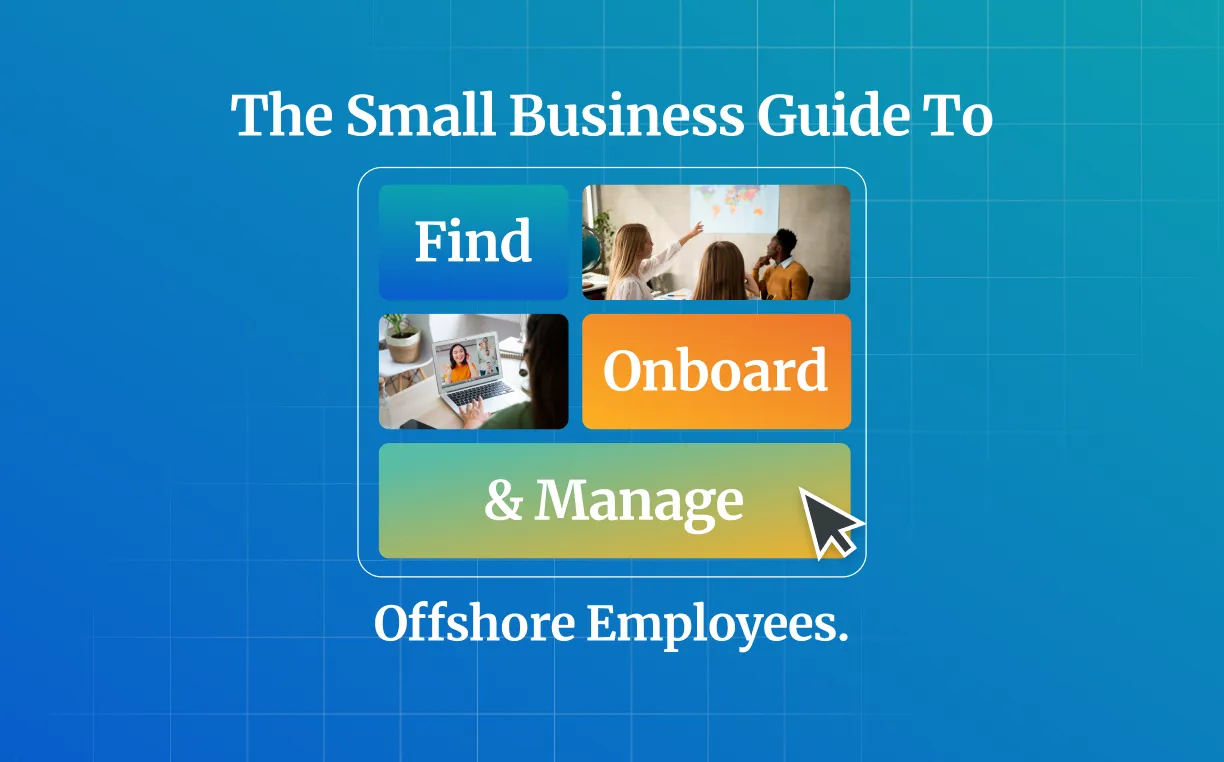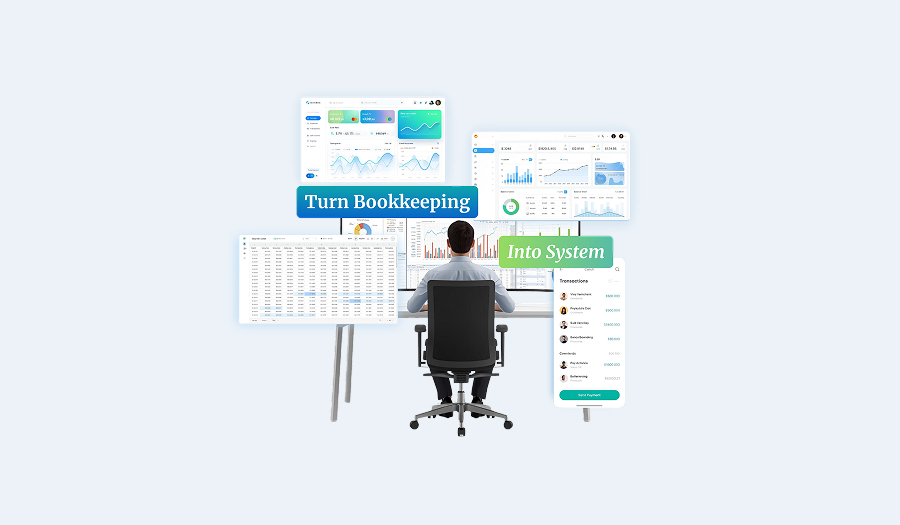The 7-Figure Contractor Risk: Why You Need an EOR

Key Takeaways:
- Gig marketplace contracts offer zero legal protection. Tax authorities use “substance over form,” meaning if your contractor functions like an employee, you are fully liable for misclassification regardless of what the platform agreement says.
- Most global contractors are legally employees, not freelancers. If you control their schedule, integrate them into your operations, or they rely on you for full-time income, you are already failing the core legal tests for independent contractor status.
- Employee misclassification is the gateway to Permanent Establishment, a tax concept that treats your contractor’s home office as your taxable foreign branch, instantly triggering new corporate income tax obligations abroad.
- Permanent Establishment creates a domino of global compliance failures. Once triggered, you are subject to mandatory local labor laws, statutory benefits, strict termination rules, and years of unpaid tax liabilities.
- The total financial exposure easily reaches seven figures. Back taxes, penalties, unpaid social contributions, misclassification fines, and labor law violations quickly compound into a catastrophic, company-threatening liability.
- An Employer of Record is the only structural safeguard. An EOR becomes the legal employer, absorbs all local compliance risk, neutralizes Permanent Establishment exposure, and enables you to hire global talent securely without the “DIY” gamble.
Hiring an "affordable" global contractor from a gig marketplace feels like a frugal, scrappy win. This perception is a strategic illusion, meticulously crafted by the platforms profiting from your gamble. The "convenience" of the "DIY" hiring model is bait. That low hourly rate is concealing a seven-figure legal and financial time bomb, and the gig platforms have engineered their system to ensure you are the only one left holding it. This is not a "risk"; it's a structural trap, and you are already in it.
This trap is set by a single, fundamental lie: that a marketplace contract protects you from what you are really doing. It does not. This article is a non-theoretical breakdown of the three-premise failure that is currently exposing your business. We will first prove that your "contractor" is already legally an employee. We will then demonstrate how this misclassification triggers a catastrophic, seven-figure financial consequence. Finally, we will establish the only secure, logical architecture to escape this liability.
Employee Misclassification Risk: Compliance That Demands an EOR
The most dangerous illusion for a scaling founder is that a contract from a gig platform provides any legal protection. It does not. Tax authorities and labor courts globally ignore these boilerplate agreements and apply a "substance over form" doctrine. They are not interested in your contract; they are interested in the reality of the working relationship. This reality is defined by a series of legal tests that most "DIY" global hiring relationships fail instantly. If you fail these tests, your "contractor" is a misclassified employee, and you are 100% liable.
How the "Control vs. Autonomy" Test Triggers Employee Misclassification
The primary legal test is "control." A true independent contractor dictates their own methods, tools, and hours to deliver a final project. The "DIY" model, however, is built on the opposite premise: you are hiring a remote worker to integrate into your team and your processes. The moment you dictate their work schedule, require them to attend daily or weekly stand-ups, or manage their tasks in your project software, you are asserting employer-level control. This is not delegation to a separate business; it is management of a subordinate.
Global tax authorities, from the IRS to the EU, are unified on this point. If the founder controls the how, when, and where of the service, an employment relationship is presumed, according to legal analysis. This single fact — directing the worker's methods — is often enough to shred the "contractor" status, regardless of what the marketplace platform's terms of service claim. The platform will not be in court with you; this liability is yours alone. You are already failing this test if you are managing, not just receiving, the work.
"Integral to Business": A Fallacy That Proves Employee Misclassification
A second, devastating test for founders is "integration." A contractor is, by definition, an external resource hired for an auxiliary, non-core project, such as a one-time website redesign. Your "affordable" global hire, however, is almost certainly managing your daily social media, ongoing bookkeeping, or permanent customer service queue. This work is not external; it is a critical, ongoing function of your core business operations. You have not hired a temporary consultant; you have filled a permanent role.
When a worker's function is "integral" to the regular business of the employer, courts consistently find that worker to be an employee. This integration demonstrates that the worker is not a separate, independent business but a functional part of your organization. This legal view instantly exposes the founder to misclassification claims and all the associated financial penalties. The cost-saving measure of hiring a "contractor" for a core role is the very act that creates the liability.
Financial Dependence: The Final Proof of Employee Misclassification
The final test is the myth of "independence." A true contractor has a roster of clients, markets their own services, and bears their own financial risk. The gig marketplace model encourages the exact opposite: a founder finds one good worker and gives them 40 hours of work a week. This worker is not an "independent" business; they are a financially dependent employee with a single paymaster: you. They have no other clients, no risk, and no autonomy.
This financial dependence is a bright red line for tax authorities. When a worker is economically dependent on a single employer, they are viewed as a disguised employee, and the employer becomes responsible for all social security, pension, and tax withholdings. This "DIY" arrangement places 100% of the compliance burden and legal risk directly on the founder, not the platform, as this guidance confirms. The perceived "frugal" hire has become a full-time, non-compliant employee.
The "Permanent Establishment" Trap: How Misclassification Triggers 7-Figure Fines
The misclassification of your worker from "contractor" to "employee" is the legal key that unlocks a Pandora's Box of catastrophic financial risk. This is not a minor HR infraction with a small fine. This reclassification is the direct trigger for a devastating legal and tax concept: Permanent Establishment. This is the mechanism that transforms your "affordable" remote hire into a seven-figure corporate liability. Understanding this trap is the turning point for every founder who believes "DIY" global hiring is a viable strategy.
Defining "Permanent Establishment": Your Accidental Taxable Presence
Permanent Establishment (PE) is a corporate tax concept that, in its simplest terms, means your remote employee's home office just became your official, taxable office in that country. Because that worker is your employee (as established in above) and is generating value for your firm from a "fixed place of business" (their desk), you are now deemed to have a permanent, taxable "presence" in that foreign jurisdiction. This happens accidentally, automatically, and without your knowledge. You did not just hire a person; you opened a non-compliant foreign branch.
International tax treaties are built to enforce this. Once permanent establishment is triggered, your company is no longer just a U.S. entity; it is a multinational one, according to employment law experts. You are now on the hook for filing and paying corporate income taxes in that foreign country on all profits attributable to your "accidental" branch. The perceived savings from your "affordable" hire are instantly vaporized by a new, complex, and unmanaged corporate tax liability. This is the silent, structural failure of the gig marketplace model.
The Domino Effect: From Permanent Establishment to Global Labor Law Violations
The corporate tax liability from Permanent Establishment is only the first domino. By establishing a legal "presence" in that country, you are now officially a local employer. This means you are no longer governed by U.S. "at-will" employment standards; you are now subject to the full, complex, and often costly web of that nation's mandatory labor laws. This is a compliance minefield for which the "DIY" model has zero protection.
This legal exposure is immediate and severe. You are now responsible for non-negotiable mandates that are completely foreign to most U.S. founders, including mandatory 13th-month bonuses, legally required severance packages, and strict termination laws that make "at-will" employment a myth. Firing a non-performing "contractor" is no longer possible; you must now navigate a complex, high-risk legal process in a foreign language, or face another wave of lawsuits.
The 7-Figure Reality: Calculating the True Cost of Non-Compliance
The "7-figure risk" is not a scare tactic; it is the simple, mathematical sum of this multi-layered failure. The true cost of your "affordable" contractor is a catastrophic cascade of compounding penalties that can, and do, bankrupt growing businesses. It is not one fine; it's the collapse of your entire financial and legal structure. This is the bill that gig platforms like Fiverr and Upwork will never pay for you.
This final bill includes years of back-pay for corporate income taxes in the foreign jurisdiction, plus massive interest and penalties for non-filing. It includes all unpaid social security, pension, and health insurance contributions for your "employee." Finally, it includes the crippling fines for misclassification and labor law violations, which in some jurisdictions can be truly astronomical. This is the seven-figure reality of the "DIY" gamble.
The EOR Solution: Why an Employer of Record Is Your Only Compliance Shield
Once you accept the 7-figure risk of "DIY" hiring, the solution becomes one of structural logic, not preference. The only way to securely access global talent is to build a firewall that insulates you from all liability. This is the precise function of an Employer of Record. An EOR is not a simple payroll service; it is a comprehensive legal and compliance architecture that acts as your proxy in a foreign country. It is the non-negotiable solution for any founder who is serious about scaling globally.
How an EOR Acts as Your Legal and Financial Firewall
An Employer of Record functions as your legal and financial firewall by becoming the official, registered employer of your talent in their home country. The talent works for you, integrates with your team, and drives your business forward. But on paper, they are an employee of the EOR, which is a fully compliant, registered local entity. This structure breaks the chain of liability that leads to Permanent Establishment.
This architecture means the EOR assumes 100% of the legal burden. The EOR manages all local payroll, withholds and pays all required taxes, and administers all statutory benefits, from pensions to health care. You receive a single, simple invoice, while the EOR handles the entire complex backend. Your Permanent Establishment risk is completely neutralized because you no longer have a direct, misclassified employee in that country.
The Strategic Trade-Off: Managed Security vs. "DIY" Disaster
The final choice for a founder is an intelligence test. The "DIY" path, using gig marketplaces like Fiverr or Upwork, offers the illusion of low cost. This path saves a few dollars per hour in immediate fees, but in exchange, the founder personally absorbs 100% of an unlimited, seven-figure financial and legal risk. This is not a frugal strategy; it is a reckless gamble with the entire company.
A managed EOR architecture is a strategic, non-negotiable investment in security, scalability, and peace of mind. It is the only platform that allows a founder to build a world-class global team with velocity and total confidence. The "DIY" disaster is the default for founders who don't understand the risk. A managed security framework is the deliberate choice for founders who are building to last.
The Final Pivot: Why EOR Compliance Is Only Half the Solution
This exposes the critical failure of most standard EOR platforms: they solve your compliance problem but abandon you on the talent problem. They are a legal shield, but they provide no mechanism to find, vet, or assess the high-skill talent you need. You are left to sift through the same low-quality marketplaces, creating massive operational drag and hiring risk. A compliance solution is useless if you can't find expert talent to comply with.
A truly strategic platform must solve both halves of the scaling equation. The architecture must integrate the iron-clad EOR shield with a powerful, data-driven talent sourcing engine. A unified platform that includes a built-in Applicant Tracking System (ATS) and a deep assessment framework is the only model that delivers on the full promise. This is the only way to find the Top 1% of global talent and securely manage them from a single, high-velocity dashboard.
Conclusion: Stop Gambling. Start Building.
The "DIY" global contractor model is a structural trap, baited with low hourly rates and sprung with 7-figure compliance penalties. Scaling a global team is not a gamble; it is an act of precise architectural design. The modern founder must reject the false economy of gig platforms and adopt a secure, intelligent, and compliant framework. An Employer of Record is no longer a luxury; it is the mandatory foundation for resilient growth. To stop gambling and start building a secure, world-class team, contact AbroadWorks today to deploy this exact, unified EOR and talent architecture.
Frequently Asked Questions (FAQ)
1. What is an Employer of Record (EOR)? An EOR is a service that acts as the legal employer for your global talent. It manages 100% of the local payroll, taxes, benefits, and compliance, shielding your company from all legal and financial liability.
2. What is "Permanent Establishment" (PE) risk? PE is a legal and tax concept where your remote employee's home office is deemed your "fixed place of business" in that country. This makes your company liable for corporate income taxes and local labor laws in that foreign jurisdiction.
3. Does an EOR service also find the talent for me?
Most standard EORs do not; they only handle compliance. A strategic partner like AbroadWorks integrates the EOR compliance shield with a built-in ATS and assessment platform to find, vet, and compliantly manage the top 1% of global talent.




